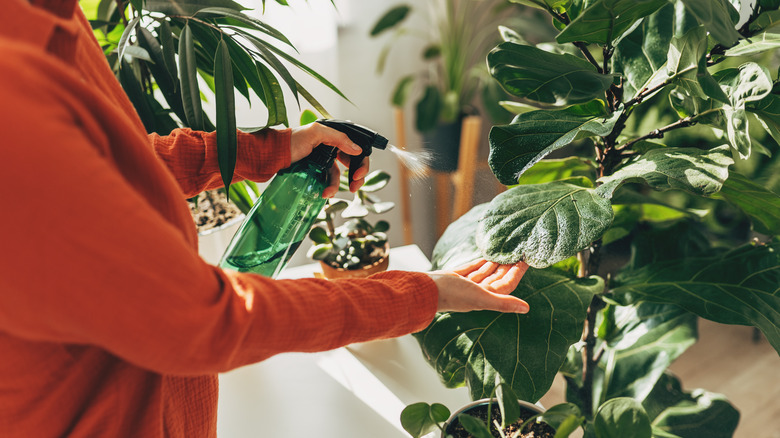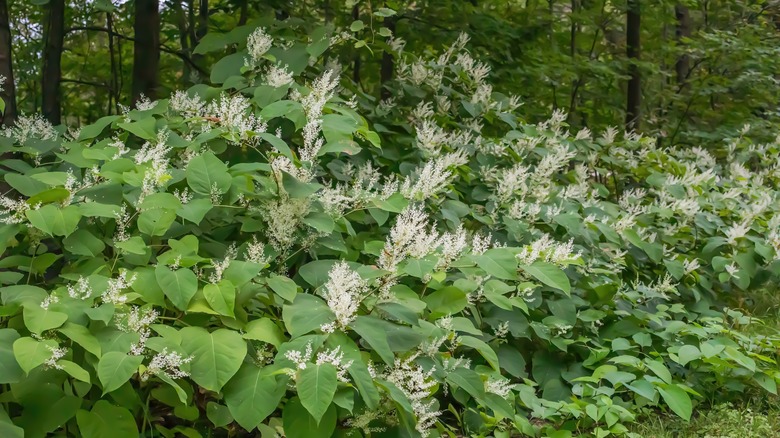Is It Safe To Have Invasive Plant Species Inside As Houseplants?
If you're new to gardening, you may have heard that one common fresh herb, mint, is particularly invasive — it will overrun your yard if you mistakenly give it a chance. Non-native plants are most often introduced to an ecosystem by human activity and are known to potentially cause harm to the local ecosystem, economy, or even your health. If you're interested in growing some notoriously invasive plant species, like purple loosestrife, Japanese honeysuckle, or Norway maple, sequestering them indoors as houseplants might seem like a good workaround at first blush. Ultimately, though, there are some invasive plant species you should never grow because the possibility of an unintended escape can lead to devastating consequences.
The exact figure for how invasive species spread is difficult to track, given that they can move easily and unexpectedly through various means, such as birds feeding on the wrong type of plant, fungi hidden in firewood, or seeds stuck to clothing and boots. However, Oregon State University estimates that between 30 and 80% of invasive species in the United States began as garden plants. In California alone, there are 1,300 invasive plant species, with a few hundred considered noxious weeds. Not all non-native plants are considered invasive, but you can't comb through every groove in the soles of your shoes or every hair on your dog's back to make sure you aren't carrying starters out into the wild, so it would be a mistake to keep invasive houseplants altogether.
Why it's important to avoid spreading invasive plant species
Letting plants like mint or catnip crowd out your garden is an annoying mistake, but they're not impossible to weed out and move on with your life. Other invasive plant species can have a devastating impact if they escape containment as houseplants. Noxious weeds, such as spotted knapweed, leafy spurge, and cheatgrass, can literally alter the composition of the soil in which they grow, making it impossible for native species to thrive as they once did. Even if you get rid of the invasive species in these cases, ecological restoration is still difficult, which in turn means it will be challenging for local animals to keep their homes and food sources. This makes the invasion of foreign plants one of the biggest threats to local communities, next to outright habitat destruction.
It is worth noting that there is a difference between invasive plant species and aggressive growers such as dandelions or wild violets. Some of these aggressive hooligan plants can even be beneficial, as they can quickly and cheaply fill out empty space in regions where other plants might not grow, crowding out weeds in the process. Still, it's impossible to know whether a plant will spread or how it might act contrary to conventional knowledge. Even so-called sterile hybrids could surprise you out in nature. If you want to keep a houseplant that will improve your mood without threatening the local ecosystem, stick to the classics.

